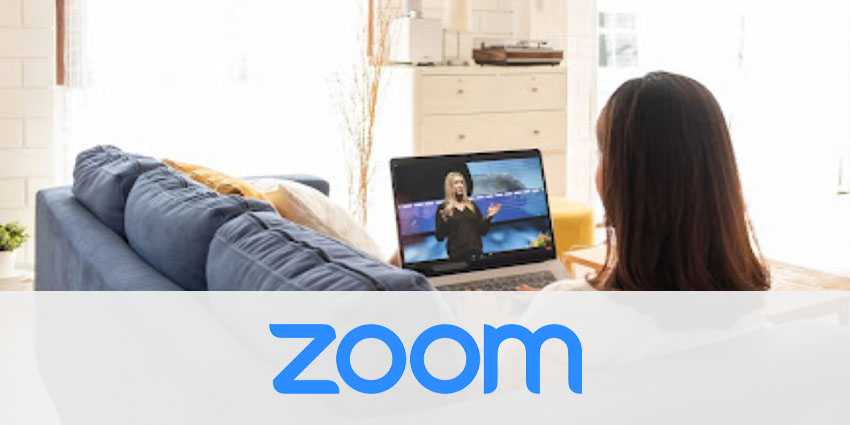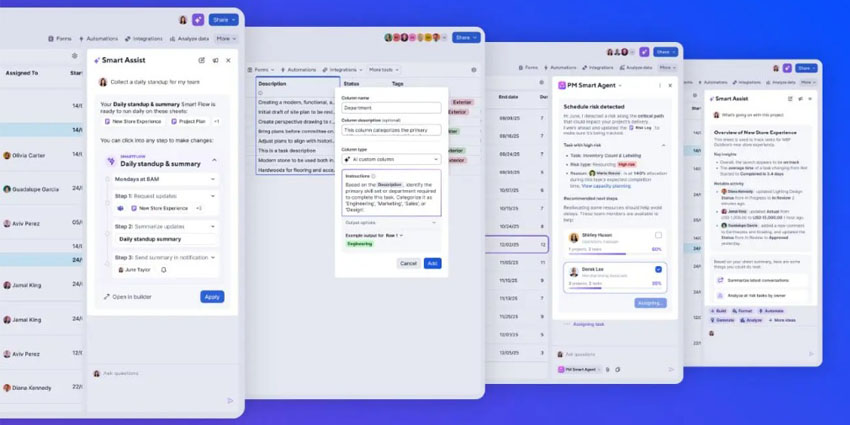Zoom’s user numbers have been increasing steadily in the last two years, and a lot of this growth can be attributed to large companies who regularly use the platform to hold conferences and events. According to the company’s 2021 Q3 financial results, it had more than 2,500 customers contributing $100,000+ in revenues. To address large enterprise use cases, the video conferencing provider launched Zoom Events in July 2021, which was the official version of its OnZoom beta offering.
Zoom Events allows businesses to conduct large-scale virtual and hybrid events such as sales summits, trade shows, customer meets, and internal conferences. Importantly, Zoom Events supports hybrid experiences by allowing users to stream live and on-demand recordings of the event feed. In January 2022, Zoom announced a further enhancement to its Events solution called Zoom Expo.
What Is Zoom Expo?
Zoom Expo refers to a virtual booth feature for events held on the video conferencing platform. Users can enter designated virtual spaces to network with attendees, chat with individuals 1-on-1, and participate in thematic conversations. A single booth can have multiple concurrent discussions at any time, and attendees can preview these ongoing conversations before joining in.
We first saw the Zoom Expo feature during Zoomtopia 2021. The company had designated booths to help attendees zero in on the topics and conversations most relevant to their areas of interest. The video conferencing provider mentioned that an Expo Floor feature in Beta powered this capability in a company blog.
This year Zoom has made Expo generally available to the public, and all customers with a Zoom Events license will be able to create their own virtual and hybrid event booths. The license needed to access the Expo feature is available at €828 per year.
How Does Expo Work?
Zoom Expo works by recreating a typical expo floor in a digital space. It is helpful for exhibitions, trade shows, and large conferences, where representatives from different companies or of varying subject matter experts come together.
For instance, during a UC expo, the host could organize booths for each sponsor, where attendees can visit and engage with the sponsor’s product offerings. This also opens up a new revenue channel for event organizers using Zoom. The company has even announced that there will be sponsored and non–sponsored booths to streamline monetization. Once they are inside the booth, attendees can interact with other event participants present in several ways.
What Are the Key Features of Zoom Expo?
Zoom Expo enables the following key features:
- Booth Spaces – Spaces refer to the multiple sessions occurring in a particular booth on the Expo floor. A single booth can have up to four spaces, and the number of spaces allotted will depend on the level of sponsorship. Currently, Zoom supports three Sponsorship tiers – Platinum (4 spaces), Gold (2 spaces), or Silver (1 space).
- 1-on-1 chat – Attendees can engage in 1-on-1 chat conversations when they are on the general Expo floor (virtual space surrounding the booths) and when they are inside the booth itself. 1-on-1 chat is possible between the attendees and sponsors, non-sponsored booth representatives, and other attendees. This is an optional feature, and attendees may turn their open to networking setting off if they do not want to engage with booth participants actively.
- Booth Resources – Apart from conversations, attendees will also be able to access and download digital assets when they visit a Zoom Expo booth. This creates a life-like event experience, with photo, video, and PDF files available for download.
- Alerts – The Expo is timebound and has a designated beginning and closing point. Before the virtual space closes to attendees, they will receive automated alerts. The platform supports automated alerts 30 minutes, 5 minutes, and 1 minute before the Expo ends, counting down to the last 59 seconds. After all the booths become unavailable, their attendees will be transported back to the lobby.
- Meeting previews – Previews are among the most valuable features of Zoom Expo, as it offers attendees a glimpse of the ongoing conversation before they decide to join in.
- Role-based tickets – Zoom Expo has a role-based ticketing system, where the ticket type determines the level of access available to a booth attendee or visitor. Organizers can distribute four types of tickets for the following roles:
- Sponsor – The primary sponsor, who can edit the session details and attend all other sessions using an attendee ticket
- Sponsor rep – An alternative host ticket to start the Expo booth sessions and also attend all other sessions using an attendee ticket
- Booth owner – Gets a sponsor rep ticket and an attendee ticket; can edit booth details
- Booth rep – Gets a sponsor rep ticket and an attendee ticket; will be on the event organizer’s list of booth representatives
Using these tickets, users with these four roles can enter the Expo before it goes live to start setting up the sessions.
Considerations to Remember
Since it is a brand new feature, there are a few caveats about Zoom Expo. First, sponsored booths are not customizable, and users must stick to the default layouts available with the platform. Only the general Expo floor is customizable by dragging the booths around. Also, only the event organizer can set up and configure sponsored booths, which could add to their work pressure while limiting control for the sponsor. As per the platform’s documentation, the Expo is currently available for only conference-type events and not single/series events.
Despite these limitations, the launch of Zoom Expo marks a significant upgrade to the events and conferencing experience on the video communication platform. As organizations gradually adopt a hybrid model, event attendees too will want to switch between physical and virtual events without missing out on any of its experiential aspects. Expo allows Zoom users to enable this without integrating a different event management platform or developing the feature from scratch.







